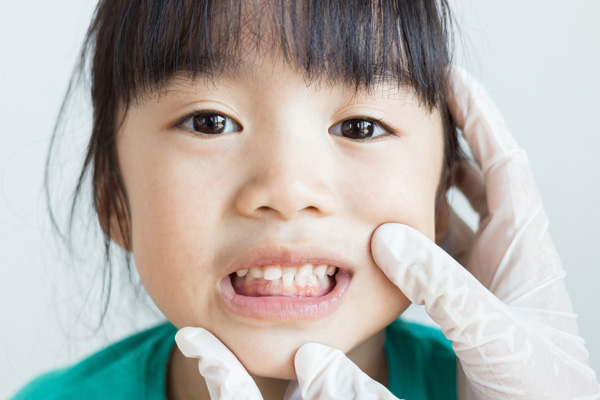 Are you wondering whether your child's dental visit should include X-rays? Read on to find out. There is much more to your teeth than what you can see with the naked eye. During a dental visit, an X-ray is used to examine the areas of your teeth that cannot be seen, such as the spaces between teeth and inside each tooth itself. Radiology images allow dentists to observe what is happening under the gum line.
Are you wondering whether your child's dental visit should include X-rays? Read on to find out. There is much more to your teeth than what you can see with the naked eye. During a dental visit, an X-ray is used to examine the areas of your teeth that cannot be seen, such as the spaces between teeth and inside each tooth itself. Radiology images allow dentists to observe what is happening under the gum line.
The importance of X-rays during a child’s dental visit
Pediatric dentists utilize dental X-rays to look inside the teeth, including the tooth's root and everything in between. The diagnostic imaging instrument employs unique electromagnetic radiation energy to obtain pictures of the mouth, teeth, gums, and jawbone.
Digital X-rays are used at the dental office to capture the child’s teeth. It is generally considered safe to use X-rays, and the radiation dose is further reduced by using digital X-rays. Also, the dentist may enlarge the photographs on their computer screen to get a better overview of what is happening. Thanks to modern radiology software, they can also compare the most current X-ray with any previous X-rays.
Discover dental issues before they worsen
X-rays are a vital tool for pediatric dentists because they allow them to detect oral problems that are not evident to the human eye. Detecting dental problems early may help avoid more serious oral health concerns in the future. For example, if cavities are not treated in time, an infection might set into the tooth, meaning the dentist might have no other option but to remove it.
In addition to detecting cavities, dental X-rays allow dentists to gauge the severity of tooth damage. X-rays may detect cysts, abscesses, and other odd growths. From the X-ray images, the dental professional can see the adult teeth that have not yet emerged from under the child’s gums, allowing them to ensure that they are not in danger of being impacted (getting trapped under the gum).
Monitor the child’s growth and development
Dental X-rays are necessary to track jaw development as well as the eruption of permanent teeth in children. Dental X-rays are also used to examine the condition of the bone around the root of the tooth, known as the alveolar bone, and to search for missing teeth that have not yet broken through the gums.
The frequency of dental X-rays your child needs is based on various factors, including their age, oral health, and potential for illness. Dental X-rays may be required more often in children because of the various changes in their mouths and the greater risk of cavities. On the other hand, Digital X-rays allow dentists to get the pictures they need quickly and painlessly.
In Summary
Pediatric dentists use dental X-rays to monitor, diagnose, and plan for your child’s oral health. Contact our dental office today to schedule a dental visit for your child.
Request an appointment or call Canyon Ridge Pediatric Dentistry at 303-841-7900 for an appointment in our Parker office.
Related Posts
At one point, you will face the reality that your kids are old enough to have teeth straightening. It usually happens before the kids turn seven years old. You need to take them to a dentist because the kids have a mix of primary and permanent teeth by then. That first visit will give the…
If there is one thing parents do not know how to deal with, it is kids toothaches. Not only are you worried about your kids, but they become irritable when they are in pain. The first thing you should do is set an appointment with a pediatric dentist. But while you wait for the schedule,…
Children are often susceptible to oral health concerns such as childhood cavities and gum disease. Additionally, performing restorative treatment on baby teeth is not ideal as it can become costly for parents. Subsequently, much of the focus in pediatric dentistry is on the prevention of oral health concerns through preventive dental care.It is important for…
